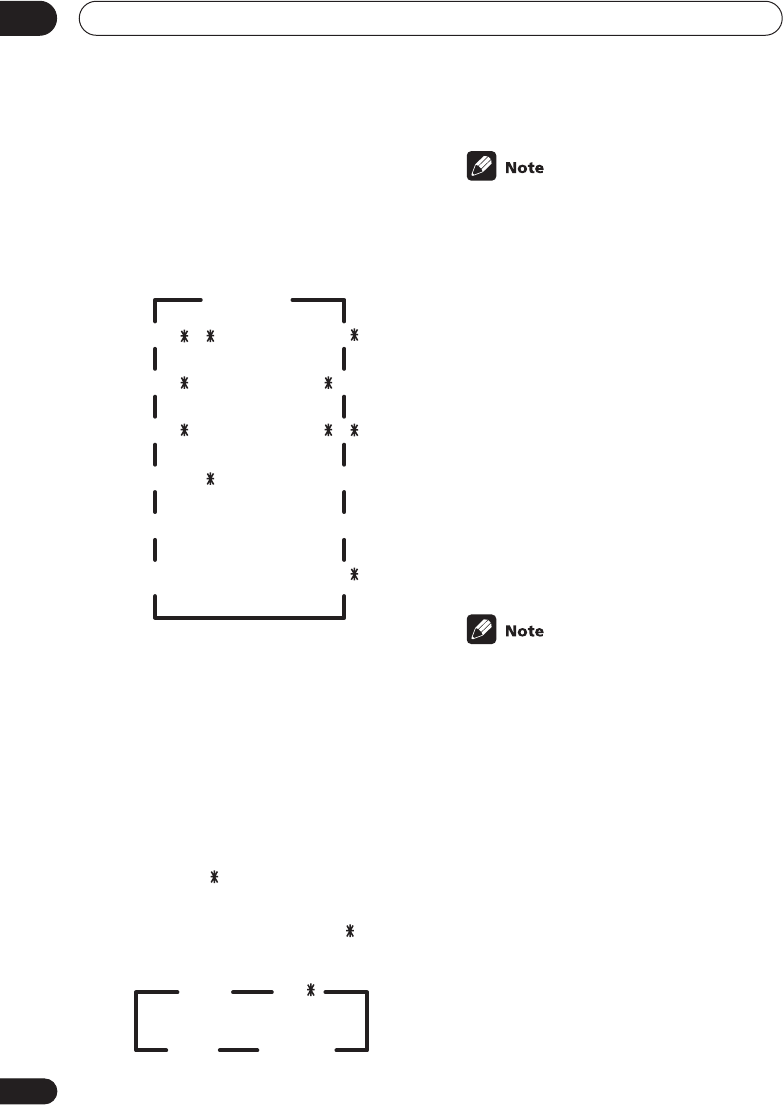
Setting up the receiver
07
44
En
• Cycle through the available choices
using
or
and choose a configuration
that matches your speaker setup.
One of the following configurations should
match your setup:
Surround back speaker setting
• Default setting:
S
You must let the receiver know if surround
back speaker(s) have been connected, and
how big they are. The size you choose (large or
small) determines how much bass is sent
from the receiver to the speakers. If you have
connected a subwoofer to the surround back
terminals, you should select the surround
back subwoofer setting (
SB SW
) from the
options. Choose (asterisk) if no speaker is
connected.
• Use
or
to select SB S, SB , SB SW
or SB L.
• To select
SB L
, you must have
SL
selected
in the
Speaker setting
.
Subwoofer setting
You can choose whether the subwoofer is
used or not. Use the plus (
PLUS
) setting for
extra bass.
• Use
or
to select the subwoofer
setting.
•
YES
– The LFE channel and bass frequen-
cies from the small (
S
) speakers are sent
to the subwoofer.
•
PLUS
– The LFE channel and bass
frequencies from all speakers are sent to
the subwoofer (
L
speakers will also output
bass).
•
NO
– No bass frequencies are sent to the
subwoofer.
• If you chose the small front speaker
setting,
SW YES
is automatically set and
locked.
Crossover frequency setting
• Default setting:
100 Hz
Crossover frequency is the point where the
receiver divides the high and low sounds (the
frequencies) between the speakers. Since
most smaller speakers can’t handle deep
bass tones, you can send these sounds to the
subwoofer (or if you don’t have a subwoofer,
the large (
L
) speakers in your system) instead
of the speakers set to small (
S
) in your setup.
Choose the point at which you want the
frequency routed to the subwoofer (or
L
speakers).
FL-CL-SL
FL-CL-SS
FL-CL-S
FL-CS-SL
FL-CS-SS
FS-C -SS
FS-CS-S
FS-CS-SS
FL-C -SS
FL-C -SL
FL-CS-S
FL-C -S
FS-C -S
SB S SB
SB SW
SB L
VSX_D912.book.fm 44 ページ 2003年12月5日 金曜日 午前9時43分


















